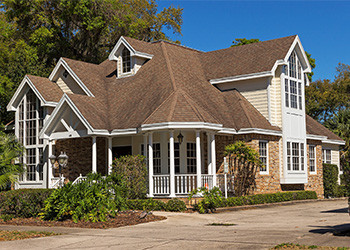
The roof of a building is its first line of defense against nature, the shield that protects its denizens from the harsh weather of the world. It’s a key component to any house and one that needs to be in good condition. However, inevitably, everyone’s roof will eventually need replacing. But how long does a roof last normally? And how can you get the most out of the lifespan of your roof? Well, Hennessey Roofing has the answers to those questions so you can get the most out of your roof.
Material Matters
One of the largest factors in the lifespan of a roof is what materials it’s made of. There are plenty of different types of roofing, but the most common are asphalt shingles, metal roofing, and tile shingles.
Asphalt Shingles
By far the most common roofing, asphalt shingles are also often the shortest-lived. They’re the most affordable option and are found all over the world. Typically, asphalt shingle roofs only last about 15 to 30 years. There are many types of asphalt shingles, all with pros and cons. When installing asphalt shingles onto your home, it’s important to look around for the best shingle option for you. You may want to spend the extra money on shingles that are more durable or that are longer lasting.
Metal Roofing
Metal roofing is one of the most durable options on the market. It also gives any building a unique and aesthetically pleasing look. It also has a very long lifespan. Metal roofing can survive up to 70 years in optimal conditions. Some metal roofs can even last longer if they’re properly maintained! However, metal roofing is more expensive than shingle roofing.
Tile Shingles
Tile roofing has been used for centuries and has only improved with technology. So much so that tile roofing can last over a century if properly taken care of. However, many tile shingle warranties only extend to about 50 years. Tile shingles are gorgeous and give any home a luxurious appearance.
Keep Up with Maintenance
The best way to get the most out of your roof is to make sure you’re consistently maintaining it. The main way to do that is to get at least two professional roofing inspections a year, once before winter and once after winter. This will ensure you don’t have any issues with your roofing that can become major damages over time. More roofing inspections can help, but two a year is the recommended minimum.































